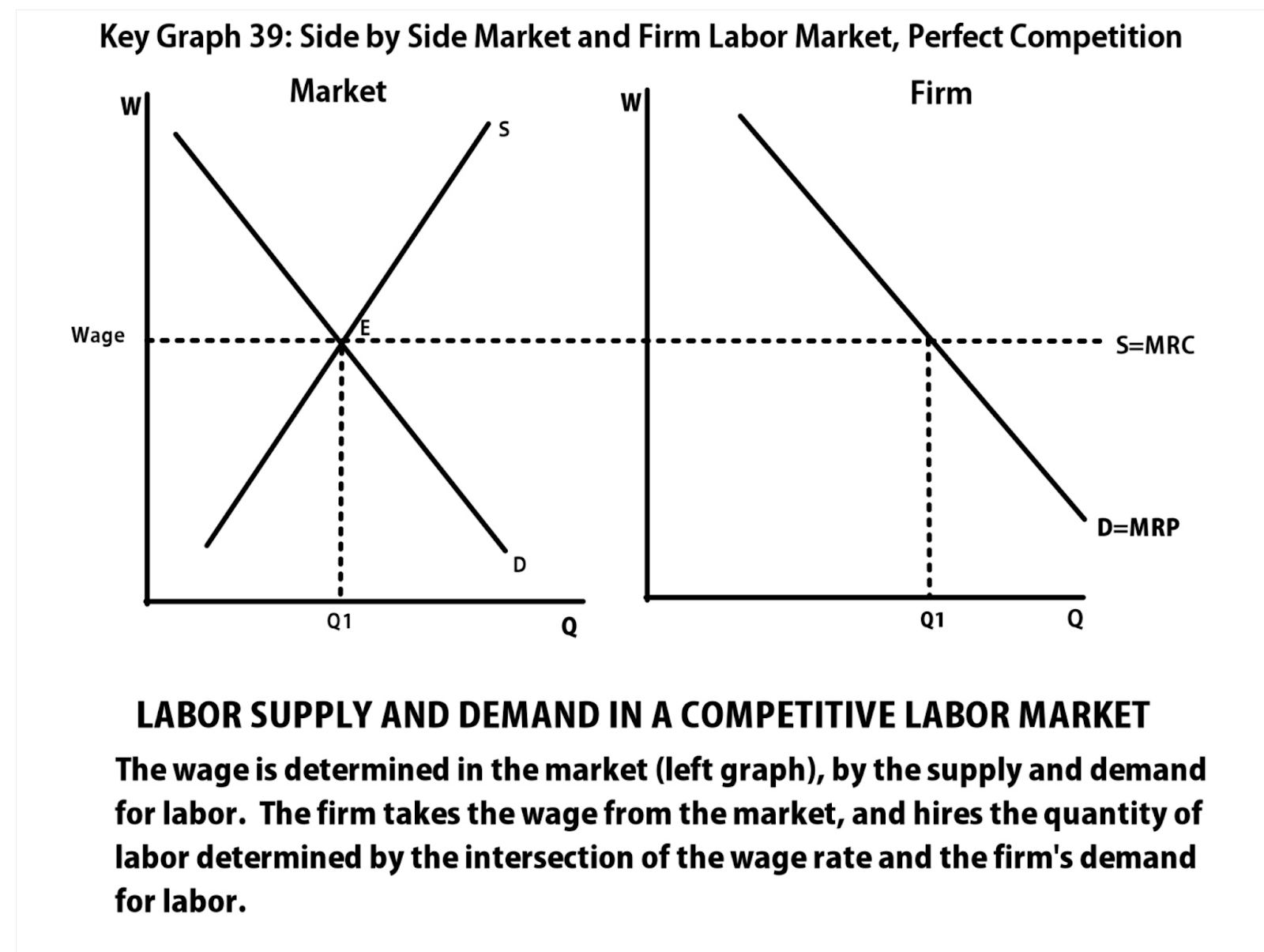Micro Unit 5: Factor Market
My FRQ
Right:
Diminishing marginal returns is when marginal product begins to decrease.
The number of workers hired in a labor market would increase when the cost of a certification decreases because the supply of labor increases
Wrong
Marginal analysis for maximizing profit - should be when Marginal Revenue Product (labor) = Marginal Factor Cost
Graphs
The wage in a labor market is not fixed
What to Know?
Acronyms
MRP = Marginal Revenue Product: the additional rev. per worker = MR (price) x MP
MFC = Marginal Factor Cost: the additional cost per worker
MRC = Marginal Resource Cost: the cost of hiring one more worker (aka wage)
Stuff
Least Cost Rule: marginal product of labor/price of labor = marginal product of capital/price of capital (MPL/PL=MPK/PK)
which ever is a greater number, hire more of (aka if its higher, hire)
Factors of Production
Land → Rent
Labor → Wages
Capital → Interest
Firm’s Demand for Labor = Marginal Revenue Product = MR x MP
When wage > MRP firms stop hiring
Profit maximizing amount is when wage < or = MRP
Businesses are the demanders, not producers
THE GRAPHS (dun dun DUH)

Markets:
Market Demand for Labor = MRP
downward sloping, as wage falls qty increases
Derived Demand that comes from…
product price
product demanded
productivity of workers
if any change, the demand shifts
Market Supply of Labor
upward sloping, as wage rises, qty rises
households are the supply
shifts with…
any changes to availability of workers
number of workers
availability
age
Equilibrium wage
supply and demand intersection
Firms:
Many buyers of labor in the market - wage takers so wage is set
Wage from market connects to supply in firm because the firms can hire as many workers as they want BUT only at that price. The supply curve of the firm = the MRC
changes in the market move the MRC
Demand Curve = MRP
increases then decreases - looks like marginal product curve (NOT NECESSARY)
change can be change in tech or productivity of a worker